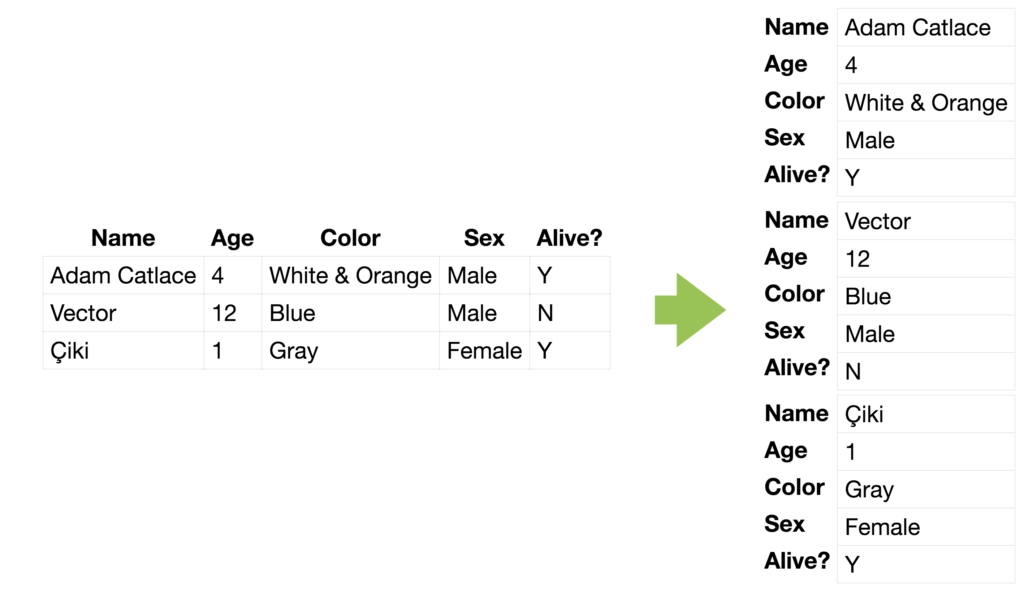
Many people have explored responsive tables. The usual idea is turning the table into key-value pairs so that cells become rows and there are only 2 columns total, which fit in any screen. However, this means table headers need to now be repeated for every row. The current ways to do that are:
- Duplicating content in CSS or via a data-* attribute, using generated content to insert it before every row.
- Using a definition list which naturally has duplicated <dt>s, displaying it as a table in larger screens.
A few techniques that go in an entirely different direction are:
- Hiding non-essential columns in smaller screens
- Showing a thumbnail of the table instead, and display the full table on click
- Displaying a graph in smaller screens (e.g. a pie chart)
I think the key-value display is probably best because it works for any kind of table, and provides the same information. So I wondered, is there any way to create it without duplicating content either in the markup or in the CSS? After a bit of thinking, I came up with two ways, each with their own pros and cons.
Both techniques are very similar: They set table elements to display: block; so that they behave like normal elements and duplicate the <thead> contents in two different ways:
- Using text-shadow and creating one shadow for each row
- Using the element() function to duplicate the entire thead, styles and all.
Each method has its own pros and cons, but the following pros and cons apply to both:
- Pros: Works with normal table markup
- Cons:
- All but the first set of headers are unselectable (since neither shadows nor element()-generated images are real text). However, keep in mind that the techniques based on generated content also have this problem — and for all rows. Also, that the markup screen readers see is the same as a normal table. However, it’s still a pretty serious flaw and makes this a hack. I’m looking forward to seeing more viable solutions.
- Only works if none of the table cells wrap, since it depends on table cells being aligned with their headers.
Using text-shadow to copy text to other rows
- Additional Pros: Works in every browser
- Additional Cons: Max Number of rows needs to be hardcoded in the CSS, since each row needs another text shadow on
<thead>. However, you can specify more shadows than needed, since overflow: hidden on the table prevents extra ones from showing up. Also, number of columns needs to be specified in the CSS (the--colsvariable).
Using element() to copy the entire <thead> to other rows
- Additional Cons:
element()is currently only supported in Firefox 🙁